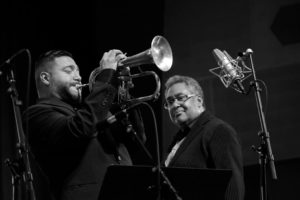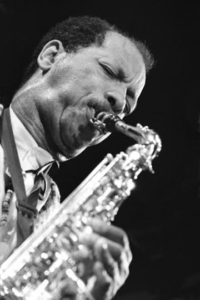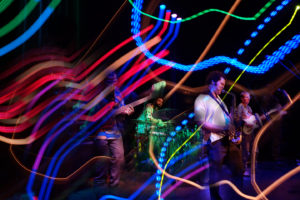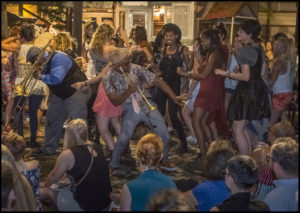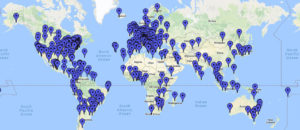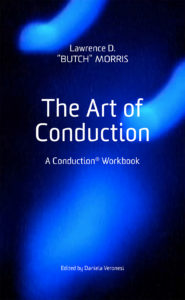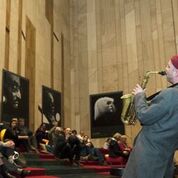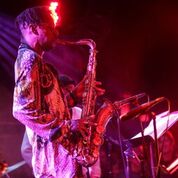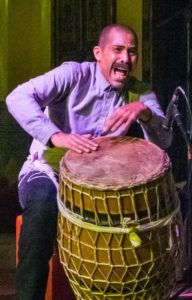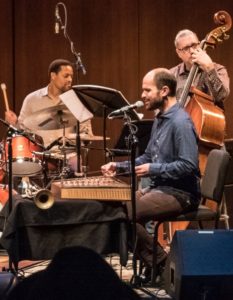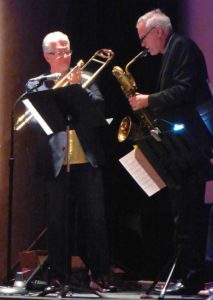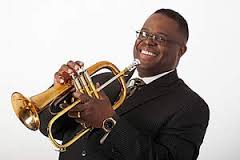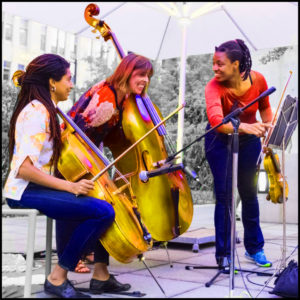My DownBeat review of the 39th annual Chicago Jazz Festival held over Labor Day weekend in and spilling out of Millennium Park, highlights the best I heard — including the specially organized big band led by trumpeter Jon Faddis, making big fun from his mentor Dizzy Gillespie‘s fresh-as-fire arrangements dating 60 to 70 years back. (Gotta wonder what a […]
Great new jazz photography — Dee Kalea’s campaign
Dee Kalea of Creative Music Photography is old school, in that she’s created black and white images of jazz musicians in performance, closeup, usually one-to-a-frame. The passion she’s captured, however, is timeless. How she became alert to the precise moment of creative rapture, and intimate with the music beyond the musicians themselves, is a story […]
Great new jazz photography #2: Lauren Deutsch’s Made in Chicago portfolio
“Made in Chicago” is true of the photography of Lauren Deutsch, and also the name of the four-day-long collaborative jazz festival she’s organized in Poznan, Poland for the past 12 years as artistic director (formerly with Wojceich Juszcsak) on behalf of the Jazz Institute of Chicago. The theme of this year’s fest was “Freedom.” The photos here […]
Great new jazz photography: Marc PoKempner portfolio from New Orleans
Photos of musicians making music — visualizations stirred in the photographers by watching sounds manifest — are exciting, and as different in style as the photographers and musicians themselves. Marc PoKempner ‘s portfolio from New Orleans of the Preservation Hall Jazz Band with Cuban drummers at the Music Box Village, a non-profit community arts garden, is the first of […]
Whatever happened to International Jazz Day?
April 30 — yesterday — was celebrated as the sixth annual International Jazz Day with a global webcast from Havana, hosted by Will Smith, headlined by pianist Herbie Hancock and including a couple of dozen top notch musicians from the U.S., Russia, Cameroon, France and Korea as well as Cuba. Did you know? Advance publicity and […]
Butch Morris’s workbook for spontaneous composition published
The deathbed wish of composer-cornetist Lawrence Douglas “Butch” Morris (1947-2013) was that his detailed documentation of Conduction®, the method he devised to enable spontaneous composition for ensembles of literally any type employing codified hand-signals, be published in hardcover. This has come to pass. On April 24 and May 1, events in New York City will launch […]
Spring break with Budapest jazz, photos
I went to Budapest for spring break — to introduce a photo exhibit by my Transylvanian-born friend  Sánta István Csaba and help jury the 10th annual Müpa Budapest Jazz Showcase/Talent Exchange, held in the modernist musem and multi-theater complex on the east bank of the icy Danube Feb 3 – 5. As I wrote in my  DownBeat article, the […]
Is NYC (still) capital of jazz?
The early January concurrence of the Jazz Connect conference, the annual convention of APAP (Association of Performing Arts Presenters), Global Fest and Winter JazzFest makes a good case for Manhattan being the capital of jazz-and-beyond. It’s inarguably true that creative sound-organizing with improvisation and rhythm is world-wide, and our native version — jazz and its derivatives […]
Jazz warms Chi spots: Hot House @ Alhambra Palace, AACM @ Promontory
There are good arguments for building venues just for jazz. But speaking of arts communities in general: Most are moveable feasts, fluid, transient, at best inviting to newcomers to the table. It’s demonstrable that when jazz players and listeners alight at all-purpose spaces such as Chicago’s Alhambra Palace, where Hot House produced the trio of saxophonist David Murray, bassist […]
African roots, Middle Eastern extensions in Hyde Park Jazz Fest
Pianist Randy Weston, a magisterial musician at age 90 inspired by jazz traditions and its African basics, and trumpeter Amir ElSaffar, who has devoted himself to incorporating the Middle East’s modal, microtonal maqam legacy into compositions for jazz improvisation by members of his Two Rivers Ensemble, were highlights of last weekend’s 10th annual Hyde Park Jazz Festival. Both […]
Thomas Chapin on film, with TromBari in Normal IL
Glenn Wilson, a terrific baritone saxophonist and flutist based in Normal, IL, is also a major mensch. Last Saturday, at the end of Normal’s Sweet Corn and Blues festival, he organized a free concert and screening of Thomas Chapin: Night Bird Song, a comprehensive documentary about his friend, the usually exuberant alto saxophonist, flutist and composer who died of leukemia […]
A Great Migration suite from trumpeter Orbert Davis: Audio interview
Orbert Davis — trumpeter, composer and leader of the Chicago Jazz Philharmonic, has been commissioned by the Jazz Institute of Chicago to write and perform a suite about the Great Migration for the 38th annual free Chicago Jazz Festival. “Soul Migration,” for octet, will be heard Sept 1 at 8 pm in Millennium Park’s Pritzker Pavillion. […]
MCA-Chicago’s Terrace concerts, acing outdoor presentation
Chicago’s Museum of Contemporary Art has aced outdoor music presentations with its Tuesdays on the Terrace series, most recently featuring the string trio Hear In Now performing strong yet sensitive chamber jazz. Drawing a thoroughly diversified crowd to enjoy fresh, creative music in open space on a summer afternoon for free (food and beverages extra) shouldn’t be […]

